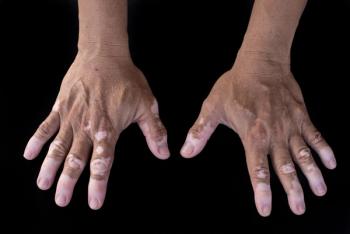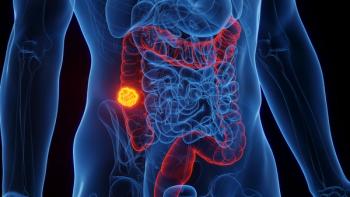
Endometriosis 101: A Disease Profile
An overview of endometriosis subtypes, treatment options and costs, according to a recent research review published in JAMA.
Endometriosis, the chronic inflammatory, sex-steroid-based reproductive disease, affects approximately 10% of women worldwide, including 9 million women in the United States, according to a
A team of researchers, including corresponding author Sawsan As-Sanie, M.D., M.P.H., from the obstetrics and gynecology department at the University of Michigan, included 99 studies in their review of endometriosis epidemiology, pathophysiology, diagnosis and treatment.
Endometriosis is characterized by the growth of endometrial cells from the inside lining of the uterus, called the endometrium, in different parts of the abdominal cavity. The growth can cause pain and infertility. For women not looking to become pregnant, the first line of therapy is usually hormonal suppression combined with estrogen-progestin contraceptives or progestins. Further lines of therapy include surgical removal of endometrial lesions.
Although no single gene has been attributed to inheriting endometriosis, twin studies cited in the review estimated the inheritability of endometriosis at 50%.
There are some risk factors. Endometriosis is more common in women who had their first menstruation before the age of 12, have menstrual cycles fewer than 28 days in length and have a lower body mass index.
Here are five takeaways from the review by As-Sanie and her co-authors.
1) There are four subtypes of endometriosis
Each endometriosis case falls into one or more of the following categories.
In women with superficial peritoneal endometriosis, endometrial lesions appear on the surface of the peritoneum, which is the membrane lining the abdominal cavity. Lesions vary in color, including brown, red, blue, white and clear.
During deep endometriosis, lesions extend below the surface of the peritoneum and may infiltrate the bladder, bowels and ureters. Lesions at this stage are nodular and may include adhesions and fibrosis.
Ovarian (endometrioma) endometriosis presents as ovarian cysts containing endometrial-like tissue and dark fluid. These cysts are sometimes called “chocolate cysts,” according to the review.
In the extrapelvic endometriosis subtype, lesions are found anywhere within the body, including the liver, the thoracic cavity, the abdominal wall and even the brain.
One of the most accepted theories regarding the cause of endometriosis is the reflux of endometrial cells during menstruation. Instead of exiting through the vagina, endometrial cells may reverse and become stuck in the fallopian tubes.
As an explanation for lesions outside the abdominal cavity, other theories propose cells may also spread through the lymphatic or vascular systems.
2) Pain is the most common symptom
In a study of 940 women with surgically confirmed endometriosis included in the review, approximately 90% of patients reported pelvic pain. Pain could be attributed to dysmenorrhea (79%), nonmenstrual pelvic pain (69%) and deep dyspareunia, or pain with vaginal penetration (45%).
Pain associated with endometriosis can be categorized into three subtypes:
Nociplastic pain is pain that exists despite no evidence of tissue damage. It can present as widespread discomfort combined with fatigue, poor sleep and depressed mood.- Neuropathic pain is pain caused by nerve damage. It can feel like a burning or stabbing sensation.
- Nociceptive pain is pain caused by damage to body tissue. It can present as an aching or throbbing sensation.
“The intensity of pelvic pain in patients with endometriosis varies, does not correlate with number, location or subtype of lesions (except deep disease in the posterior cul-de-sac correlates with dyspareunia), but typically increases during menses,” As-Sanie and her colleagues write in the review.
Other notable symptoms mentioned in the review include
- moderate to severe fatigue (50%)
- dyschezia (painful bowel movements) (27%)
- infertility (26%)
3) Endometriosis often goes undiagnosed for years
Endometriosis diagnosis is often delayed anywhere from five to 12 years after symptom onset, usually seen in adolescence or the woman’s early 20s. On average, women are evaluated by three physicians before receiving their diagnosis.
4) Treatment options can be limited and aren’t always effective
“Hormonal medications, such as combined oral contraceptives and progestin-only options, are first-line treatment and should be offered to symptomatic premenopausal women who do not currently desire pregnancy,” As-Sanie and her colleagues write in the review.
However, 11% to 19% of patients on hormonal medications see no symptom improvement and 25% to 34% have pelvic pain return within 12 months of discontinuing hormonal treatment.
Surgical removal of lesions may be needed if hormonal therapies are ineffective. Still, approximately 25% of patients who undergo surgery have recurrent pelvic pain and 10% undergo additional surgeries.
5) It’s costly
In addition to affecting women's quality of life, endometriosis is costly.
In the United States, it accounts for approximately $78 billion in annual health care costs. This includes treatment and wages lost from missing work.
Newsletter
Get the latest industry news, event updates, and more from Managed healthcare Executive.





















































